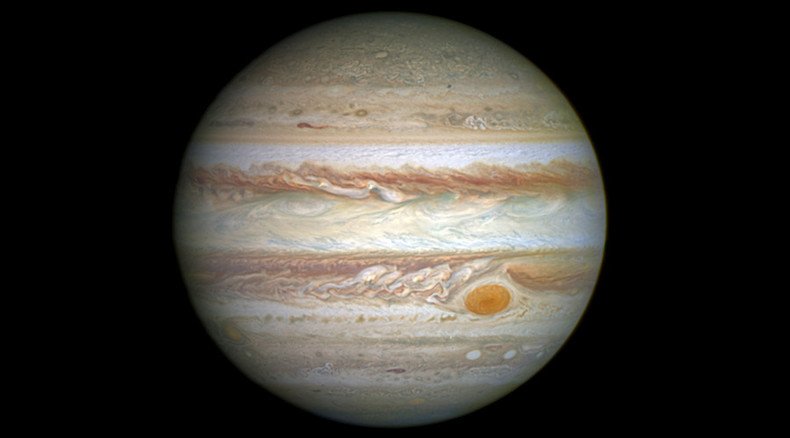Jupiter ejected its icy brother giant from solar system, its moon implies

There was a fifth giant planet in the solar system, but it was ejected after a close encounter with Jupiter, a computer model made by Canadian astronomers suggests. They studied the orbits of a Jovian moon for proof.
The dominant scientific view of how our star system came to be as it is now is called the Nice model after the French city, where it was first developed. It is pretty good at explaining most, but not all things. For example, Jupiter is too far from the Sun to fit the model.
One possible explanation is a fifth giant planet in addition to Jupiter, Saturn, Uranus and Neptune, which was ejected after a close encounter about 4 billion years ago. This would have been similar to how probes use planetary gravitational pull to slingshot themselves towards their next destination during interplanetary missions.
#NASA releases images of enormous 8,000-year-old patterns https://t.co/2zrE7nrUO6pic.twitter.com/UdVAbTDVHB
— RT (@RT_com) October 30, 2015The hypothesis was proposed in 2011. Alternatively, another giant could have kicked the fifth planet out of the solar system: Saturn.
Canadian astronomers at the University of Toronto found new proof of the hypothesis that point to Jupiter as the culprit after studying the orbits of Callisto and Iapetus, two moons orbiting Jupiter and Saturn respectively.
They used computer modeling to assess how likely the moons would be to have their current trajectories after their host planet ejected the hypothetical giant. The team estimates that for Jupiter such an event would be 42 percent probable, while the Kronian satellite orbit gives only a one-percent likelihood.
The study was published in Sunday’s issue of the Astrophysical Journal and is also available on the preprint website arXiv.org.
The icy giant’s current whereabouts are unknown. Apparently it joined the estimated hundreds or thousands (or even billion) of so-called rogue planets traveling across the interstellar space of the Milky Way.












